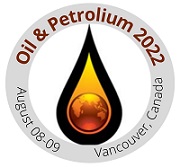Geophysical and Remote Sensing Techniques
Geophysical investigation strategies offer subsurface facts without digging or drilling. They can display vital geotechnical properties such as bedrock intensity and rock fine, as well as reservoirs of water or oil, metallic items or contaminants. If present-day geophysical investigations are integrated with traditional geotechnical investigations and their records, incredibly precise, non-stop and complete models may be produced for utility within numerous areas.
Remote imaging, performed by terrestrial, airborne or satellite-based systems has the capability to appropriately picture the Earth's surface with excessive resolution. This can be used for settlement and deformation tracking, surveying rock slides and making engineering geology critiques. State-of-the-art faraway sensing strategies at NGI consist of radar, optical image evaluation and Lidar and GigaPan Measurements. As with geophysical technology, the quality results are frequently executed via integration with the more conventional geotechnical Methods.
Related Conference of Geophysical and Remote Sensing Techniques
6th Annual Summit on Satellite and Space Communication Technology
7th International Conference on Artificial Intelligence, Machine Learning and Robotics
10th World Congress on Computer Science, Machine Learning and Big Data
10th International Conference and Expo on Computer Graphics & Animation
Geophysical and Remote Sensing Techniques Conference Speakers
Recommended Sessions
- Reservoir Engineering and Reservoir Simulation
- Advanced Drilling Techniques and Safety
- Advanced Natural Gas Engineering
- Basin Studies
- Biofuels and Hydrocarbons
- Catalytic cracking
- Current Economics & Market Trends in Petroleum, Oil and Gas Industry
- Drilling and Well Operations
- Energy Conversion and Storage
- Enhanced oil recovery
- Entrepreneur Investment Meet
- Environmental Hazards & Risk Assessment in Oil and Gas Industry
- Geophysical and Remote Sensing Techniques
- Global Crisis and Challenges in Oil and Gas Industry
- Hydraulic Fracturing
- Innovations in Upstream and Downstream operations
- Oil and gas technology
- Oil, Gas Exploration and Production
- On shore and off shore operations
- Petro chemistry and Applications in Polymer Science
- Petroleum Distillation and Refining
- Petroleum Geology and Geoscience
- Recent Development in Oil and Gas industries
Related Journals
Are you interested in
- 5G and Beyond Satellite Communication - Satellite-2024 (Netherlands)
- Climate Monitoring: Satellite-Based Solutions - Satellite-2024 (Netherlands)
- Deep Space Missions: Latest Developments - Satellite-2024 (Netherlands)
- Earth Observation: Remote Sensing Applications - Satellite-2024 (Netherlands)
- Emerging Technologies: Quantum, Optical Communication - Satellite-2024 (Netherlands)
- High-Frequency Communication: Challenges, Solutions - Satellite-2024 (Netherlands)
- Interplanetary Communication: Challenges, Future Directions - Satellite-2024 (Netherlands)
- Lunar Missions: Latest Updates - Satellite-2024 (Netherlands)
- Mars Exploration: Missions, Findings - Satellite-2024 (Netherlands)
- Navigation for Autonomous Vehicles: Satellite-Based Solutions. - Satellite-2024 (Netherlands)
- Satellite Antennas: Advances, Performance Optimization - Satellite-2024 (Netherlands)
- Satellite Broadcasting: Multimedia Services, Innovations - Satellite-2024 (Netherlands)
- Satellite Communication Protocols: Standards, Protocols - Satellite-2024 (Netherlands)
- Satellite Constellations: Design, Deployment, Management - Satellite-2024 (Netherlands)
- Satellite Licensing: Compliance, Legal Issues - Satellite-2024 (Netherlands)
- Satellite Navigation: GNSS, Augmented Technologies - Satellite-2024 (Netherlands)
- Satellite-Based Internet of Things (IoT) - Satellite-2024 (Netherlands)
- Space Debris: Mitigation, Management Strategies - Satellite-2024 (Netherlands)
- Space Situational Awareness: Monitoring, Collision Avoidance - Satellite-2024 (Netherlands)
- Spectrum Management: Regulations, Policy Frameworks - Satellite-2024 (Netherlands)

